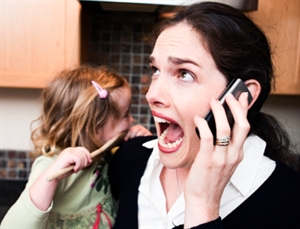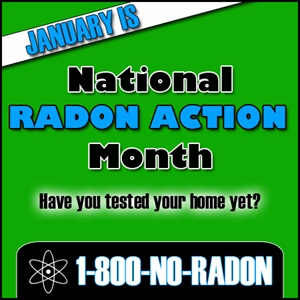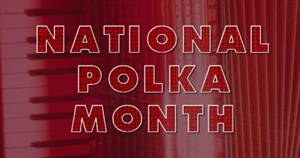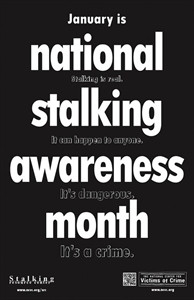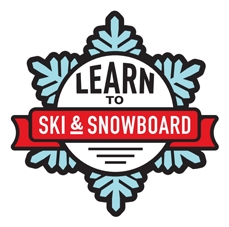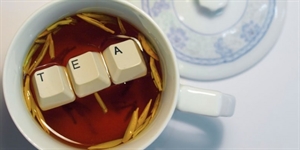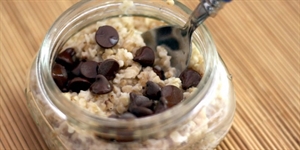Train Your Dog Month on January, 2025: Need help training my dog! Help!?
January, 2025 is Train Your Dog Month 2025. About the APDT Train Your Dog Month About Train Your Dog Month
As an Amazon Associate I earn from qualifying purchases.

Your dog doesn't hate you, he is scared of you. Imagine you were his size and you met someone your size who was yelling and screaming in a language you didn't understand, would you want to do everything they said? Probably not.
The good thing is you have had a re-think and (I hope) are more willing to deal with your anger. Dog training is a long process that requires patience. Also if you want a loyal dog you have to give something to your dog for it to want to be loyal to you. Loyalty from dogs is earned, there is no special dog or breed that will instantly give it to anyone.
Leave your anger and frustration at the door when dog training as dogs can sense tension and if you are frustrated your dog will more than likely feel it. I know that is easier said than done (I too had anger issues and was extremely impatient) but what I can tell you is that working and training an animal and seeing positive results works magic on easing stress. yes there will be time you will want to tear your hair out but when training a dog (or any animal) you need to exercise patience and calmness. Before you start training your dog you need to train yourself. Learn to walk outside and have a few deep breathes when you start feeling angry, make yourself think of something else than what you were concentrating on at the time (something nice that is), or just go stick the kettle on and have a brew. Once you are able to train yourself to stop before you blow, then you can start dog training.
However before you start telling your dog what to do you first need to regain trust and show him that you are a positive thing in his life and not a scary thing that shouts. Best way to do this is slowly, get a clicker or even a pen that makes a loud clicking noise. Clickers are greats for training. Click the clicker (or pen) and give the dog a treat, don't do it constantly but reguarly throughout the day for a few days (i would usually speed it up but you are trying to gain trust) every time you click you give a treat after. You don't even have to make eye contact at first just walk past, click and doggy gets a treat. that way the dog associates both you and the clicker with good things, it's good to throw in a nice calm good boy too when handing the treat out, or you can say his name, click and then give a treat, that way you can end up getting a response from calling his name.
This dog is obviously not sure where it stands and is feeling intimidated so you need to be calm, approachable and patient when around him. If you really feel like you are going to blow do it well away from your dog otherwise he will never trust you.
Once you gain his attention and he starts approaching you, you can try a simple sit. Just sit on the floor near him, show him the treat and say sit, (of course at this point he won't know what you mean) but if you wait until he sits (make take a few tries so dont get upset) click the clicker, or just say good boy and give him the treat. Just a note - if he does sit and you do that, still dont expect him to sit instantly the next time you say it, it can take a wile for it to sink in, so you may need to do it several times before he understands sit means sit and even so he may hesitate the next day after doing it, just keep patient and eventually you will get there.
My bitch could do sit and lie down easy but when it came to training her just to stand it took a LONG time, but that could be just the way i was training her.
Also remember not to rush things, so no doing different training every day, just try to keep it repetitive until you understand her learning capacity. Also you could try looking on the internet for dog trainers in your area, even if you can't reach or afford them (as i couldnt lol) they can still give some good advice.
Also sorry this is so long.. and good luck

Dog training?
POTTY TRAINING HELP
K-9 Learning Zone (Where Building Relationships Last a Lifetime)
Questions You Must Answer:
1.Where do you want your puppy or dog to eliminate?
2.Where do you want your puppy or dog to live all of the time that you can’t supervise him? Limit their freedom. Where you go, the puppy goes. Or put the puppy behind a baby gate, safe room, playpen, in their crate, or on a leash attached to you.
Important Facts to Know
Fact 1. Crating or otherwise confining a dog does not teach him bladder and bowel control. This is a normal developmental process that occurs on its own.
Confining a dog in a small area such as a crate or playpen when he cannot be supervised supplements his natural tendency to move away from the ‘nest’ or ‘den’ to eliminate, but it does not create the tendency.
The statement-a dog won’t soil his crate is a myth. If left too long a dog will soil his resting area.
Fact 2: Learn what your dog is trying to tell you when he has the urge to go.
Barking, whining, growling, sniffing, squatting, turning in a circle are things to watch out for.
Tip 2: Keep track of his/her intake of water.
Drink after meals, during and after play. Allow him to drink his fill whenever water is offered. If you have to leave him alone while you are at work, leave ice cubes in his bowl. Don’t expect him to hold his bladder that long if he is not at least 5 or 6 months old.
Tip 3: Premium food is your best choice. Why?
Feeding a better quality food will be more digestible which means smaller stool volume and better nutrition.
Avoid changing your dog’s diet while working on potty training unless you are changing to a better quality food. Digestive upsets may occur. Gradually switch food over a 5-7-day span.
No table food. A dog’s digestive system isn’t designed to handle the same things yours is. Don’t blame your dog for potty training setbacks because you shared your food with him.
Tip 4: Scheduled feeding works best for puppies during this process. If you want to “free choice”, you will have to be especially looking out for your puppy for signs that he needs to go potty. If your puppy has special needs, check with your veterinarian.
Where To Feed Your Puppy
Place his bowl in the same place. If you have a working or guard group breed dog, place the dishes in more of an open space.
How to feed your puppy/dog
Tip 6: Allow 20 minutes to eat it. Take it away if they leave their bowl and do not offer him more until his next feeding time. Unless you are free feeding you can leave it down. Measure out their food and keep track how much the puppy is eating during the day, as you don’t want to over feed.
When To Go Out
Make out a chart on your puppy’s progress. Be more concerned about the improvements, not the mistakes that he makes. Routine is very important in the potty training process.
After Eating and drinking water
Before play and exercise.
After waking up in the morning and from a nap
Sometimes even after eating a treat
If he stops chewing on a bone or toy and walks away
Any other time that he acts like he needs to go
Removal from confinement
Teaching Your Puppy/Dog To Let You Know That He Has To Go Outside.
1.Barks
2.By ringing a bell at the door
3.Pushing a doorbell to go out or back in. “Home Depot” sells doorbells that can easily be attached to the door.
Turn any signal into wanting to go outside. They bark at you, take the dog outside. If they bark, take them outside. Take them immediately. Take them to the same place to go potty. You must watch to see if your puppy goes. Supervising your puppy is important.
Teach Them to Potty on Command
Pick out your phrase that you will always use. It is important that everyone in the household is consistent in saying the same thing. Use phrases like, “Better Go Now”, “Do Your Business”, or “Go Potty”, etc. “Do your little potty”, “Do your big potty”. They use two different muscle groups during the potty process, so use two different phrases. So what I do is go out and ask them to Look for their potty. I tell them to LOOK for their little potty, and if I feel like they need to, to find their big potty. If I am not sure they don’t have to go, I will just tell them to LOOK for their potty. The way they will do this, is to have their nose to the ground sniffing for it. If I tell them to FIND it, be sure that you are willing to stay out there as long as it takes until they go, because you told them to do something.
Put your puppy in a body harness and leash. Take him to the spot that you have picked out for his potty area. Ask him to look for his little potty. Try to not over do the talking though as some dogs will get too distracted by that. When he starts to sniff the ground, praise him by saying “There you go looking for your little potty”. Then keep repeating your phrase, “Looking for little potty”. If he gets distracted by something, or wanting to go out of the potty area, just use your leash and do a little tug back into the area. When he does his little potty, verbally praise him and go briefly and pet his head. “That’s your little potty, good boy”. Then I will tell him to go look for his big potty. When he finishes, bring him between your legs, bringing up his head and praise him well, talking about how he did his big potty Anytime he does his big, we go on a walk in the neighborhood for an added reward.
The goal is to be able to take him anywhere and ask him to do his little and big potty, so that you are not waiting around forever for him to go. So I am able to ask my dog to go and he will at any moment that I ask him or her to do so.
Chart to see how long after eating does he need to do his big potty. Morning time, after waking up, how long after his meals, etc. Normally if they pee a couple of times they don’t have to do big potty. If they do their big potty, there will always be their little potty. Sometimes you can be outside with them for quite awhile so be patient and consistent. The more consistent you work on the process, the faster they will get it. I will use time-out if they are out there and refusing to go, even though you know they need to go potty.
Where in the yard, one spot or all over?
My dogs have a space 5’x6’. So it doesn’t have to be a large space. We put down drainage rock on the bottom, then I laid shade cloth down, and then mulch on top of that. Put a little poop on it to give them an idea where you want them to go.
If you have a small or very young puppy you may have to carry outside. Always praise your puppy for going in the correct spot. Verbally praise well. If you play with him outside afterward, take him to another area in the yard, but only after we eliminate first.
What Do I Do If He Messes On the Floor?
People thought they could correct a dog for house training lapses no matter how long ago those lapses occurred. Many of those same people also thought that rubbing the offending pooch’s nose in his poop or pee would further help him understand that doing his biz in the house was not a good thing to do. First, dogs don’t remember their housetraining mistakes. They don’t feel bad for doing what comes naturally. And they don’t connect having to eyeball their waste with having deposited that waste in the wrong place a few minutes or hours earlier.
All that will happen is the trust that you are building with your dog goes away.
If you come upon a puddle or pile inside your house, it’s too late to do anything but clean it up. Shame on you for not watching him! Do that, resolve to prevent future accidents and consign the nose-rubbing.
If you can’t watch him, place him into his crate or outside!
When your dog uses his potty in one particular space in your house, simply eliminating the odor of urine and then marking the area with a different scent can get the dog going in the right rest room again. Once the area is odor-free and clean, sit down on the carpet with your dog and a paperback and spend a little time each day there. In just a few days, that place will smell like a living room instead of a toilet to your pup.
Give the treat at the time we went potty, not after we have come in from outside.
Once our dogs are no longer puppies, we seem to have some sense of entitlement that grown-up dogs should go outside, because “they should know better”. But if they’re to the bathroom in the house, you can either get upset about it and put on a threat display as any agitated primate would-scaring the heck out of your dog in the process- or you can get over it and give him a treat for going outside. Trust me, the latter works a lot better.
He looks guilty!
Your dog’s failure to meet your gaze does not result from guilt. His low-hanging ears and tail do not reflect remorse. His body language does not reflect any feelings he has from peeing on your rug. Before you walked in the door, he was probably taking a nap and wasn’t thinking at all about how the rug got that stinky yellow stain. Only when you sent that menacing glance his way did he realize that he might be in trouble. And he responded accordingly: with body language that says, “I don’t know why you’re upset, but I’ll do anything it takes to make you feel better”.
Dogs don’t know the meaning of guilt. Your dog has no idea that you’re angry, because he used your Oriental rug as a potty. He doesn’t even remember having done so. He understands only that you’re unhappy, and he’s responding in the only way that he knows how.
Remember: Success depends on how consistent you are with him. You are setting yourself up for failure by failing to stick to the schedule.

Can you train an 11 month old dog?
Sounds like a fine dog under the circumstances. A lot of competition obedience trainers don't even begin to start until after 12 months. Others do a lot of work with puppies. Success can be had either way. This dog is definitely not too old.
I disagree with the advice on prong collars and remotes. They are important training equipment. I do agree that the dog doesn't need harsh methods and that careless aversives can ruin him. Prongs and remotes are just tools not techniques. They have low levels and high levels and the handler determines that not the tool. In Schutzhund for example, where you will find the best Rottweilers exceling in obedience, protection and tracking, you will not find anyone achieving good results who doesn't use both a prong collar and a remote regularly. But harsh aversives will produce a Schutzhund loser because the sport is very aesthetic and if the dog doesn't look happy doing the obedience it will lose points. It has to heel, sit, down, retrieve etc. looking very natural and free. A dog trained by fear of aversives will show it and even a amateur judge can easily see the side effects.
You're obviously on a low budget so I'm not going to suggest any expensive schools, seminars, or videos but you can glean a lot of information for free from leerburg.com and trainperview.com. Look at Michael Ellis and Ivan Balabanov for training methods because their methods are both good and well taught (doesn't help if someone is good but can't teach it). Also check out the workingdogforum.com for free advice and free bs (it's a package deal). Once you have a clue what you're looking at (so you can tell good from bad), you should check out your local Schutzhund or ring clubs and see if they're decent because if they are then you could have significant in-person, hands-on help available for what is usually a small annual due.
For starters, read this article: and get a dog crate. Go from there. Leerburg sells videos and I'm not trying to sell you their videos -- you can get a lot from their free articles and forum.









